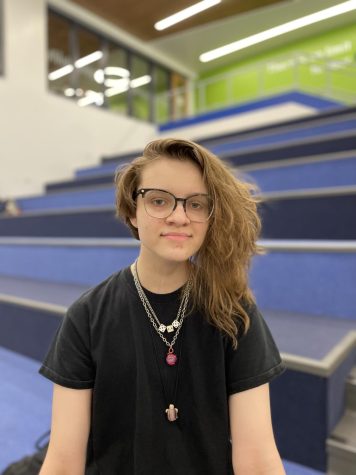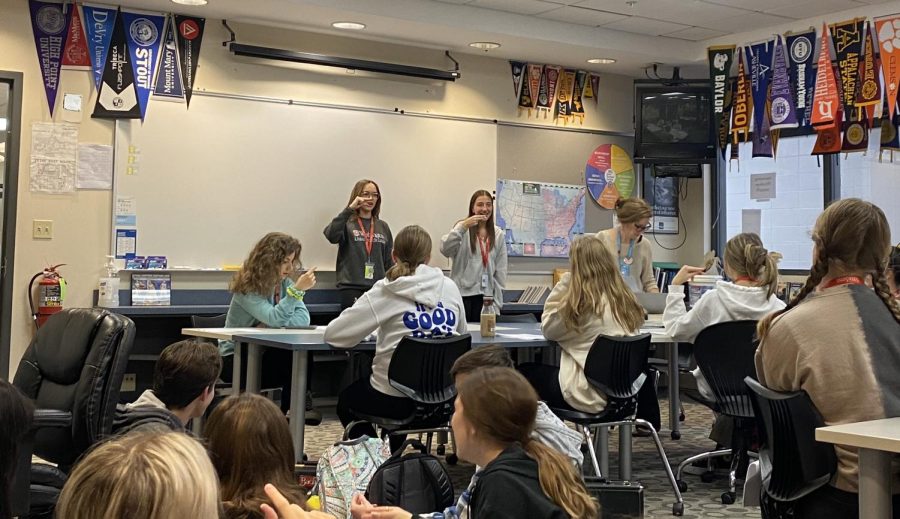Sign for the future
Photo by Lexy Kushner
Ava Malin and Delaney Petrow, seniors, teaching signs at the ASL club to students attending the before school meeting.
Language and communication come in a variety of forms. Although speech refers to the expression of thoughts and feelings, it is typically thought of as verbal languages. By using sign language, both hearing and deaf people can communicate through signs rather than words.
Sign language is a communication method often used by the deaf and hard of hearing communities. As awareness for these communities increases, American Sign Language, also known as ASL is becoming more prominent in social interactions, future career paths, and everyday life.
“I love how I’ve seen people speaking Sign Language and you can still have so much expression and attitude when you’re signing,” Julia Miller, sophomore, said. “A class would bring more attention, consideration, shine more light on the community, and bring more inclusivity for everybody. As a class, I would 100% take that.”
Having an ASL program would help the school be more accepting and welcoming to anyone who communicates non-verbally while opening up more opportunities for students to communicate with others in the future. Many communities that use sign language as their form of speech are present in our everyday lives. Learning ASL can provide numerous opportunities for these students.
“I think that [sign language is] important because humans are super verbal,” Miller said. “It’s devastating how people who are deaf don’t have an easy way to interact with people or interact with such characteristics and expressions.”
For those born with hearing or verbal communication boundaries, sign can provide them the opportunity to express their thoughts and feelings. Having an ASL class can help students learn to communicate and learn more about their culture.
“It’s an amazing opportunity to get another language in your head. [ASL] is really interesting and the background behind it is amazing. It makes other people happy too because they don’t feel as alone,” Sophia Kies, freshman, said.
While LZHS does not have an ASL class, there is a club. Ava Malin, senior, and Delaney Petrow, senior, are the leaders of the sign language club. Melissa Smith, the club sponsor and speech-language pathologist, says their goal is to teach beginner signs and practice the basics to help spark an interest in sign and encourage students to continue learning ASL in the future.
“Communication is the baseline for human experience. If you can support somebody so their experience can be more global and be getting to know other people, that’s success,” Smith said. “We’re talking all the time about making the world a better place or more inclusive, and I think communication is that beginning step.”
Having an ASL class could be beneficial to students and their futures. ASL can be used to interact with more people and communities while learning about the world from their perspective.
“Without allies, understanding, knowledge, and the support of the hearing population, we’re leaving a whole subset of the community out of engagement,” Smith said. “[ASL] allows somebody a window into someone else’s experience and how they can support a culture they might not be familiar with, to be an ally.”

For their junior year, Lexy is spending their first year on the Bear Facts staff on the opinion/ed section. Outside of journalism, they can be found drawing,...

